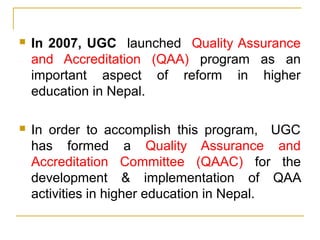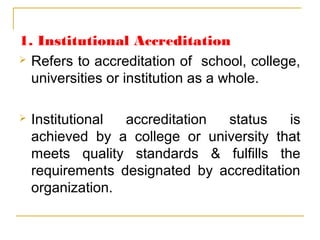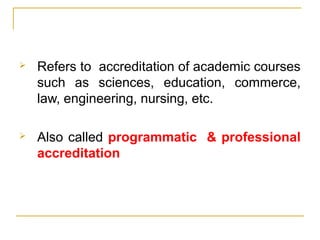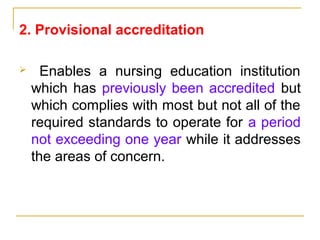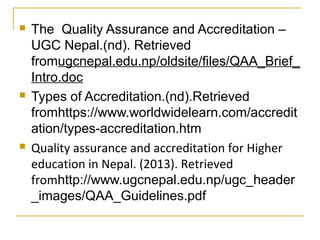The document outlines the accreditation process for nursing programs, defining it as a self-regulatory and quality assurance measure to evaluate institutions against established standards. It discusses the historical context of nursing accreditation both internationally and in Nepal, detailing the roles of various accrediting bodies like the NLNAC and CCNE. Additionally, it describes types of accreditation, the purposes and principles of accreditation, the overall process, and the challenges faced in maintaining quality standards in nursing education.












![ After the registration laws were enacted in
the U.S., state boards of nursing begin to
emerge for the purpose of regulating nurses
and protecting the public.
The first nurse inspectors was Annie
Damer, in New York (American Nurses
Association [ANA], 2001).](https://image.slidesharecdn.com/accreditation-190607130139/85/Accreditation-13-320.jpg)


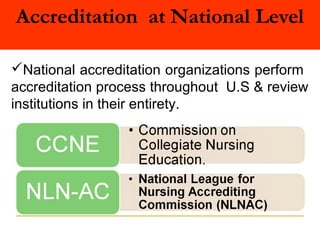








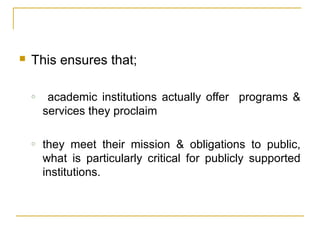




![1. University Grants Commission
(UGC)
The University Grants Commission (UGC)
was established after the implementation of
multi-university concept in Nepal.
The University Grants Commission (UGC) is
a statutory body established by an act of
parliament [Act No 25 (1993)].
The Commission started functioning since
July 1994.](https://image.slidesharecdn.com/accreditation-190607130139/85/Accreditation-30-320.jpg)

